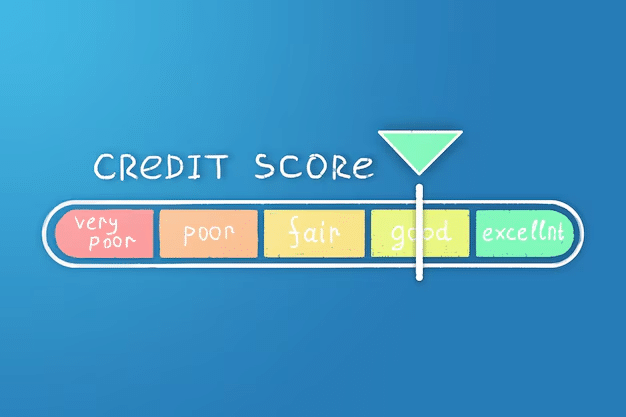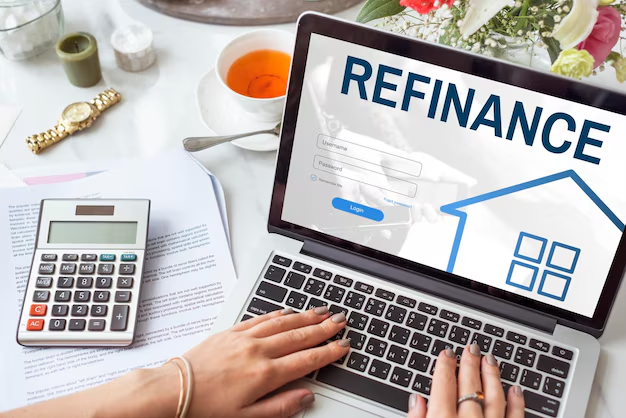Refinancing a loan is a financial strategy that allows borrowers to replace an existing loan with a new one, often with different terms. This can be applied to various types of loans, including mortgages, student loans, auto loans, and personal loans. The goal of refinancing is typically to reduce monthly payments, lower the interest rate, or adjust the loan terms to better fit your current financial situation.
In this article, we’ll explain how you can refinance a loan and highlight the key benefits of doing so.
What Does Refinancing a Loan Mean?
Refinancing involves taking out a new loan to pay off an existing one. The new loan may have different terms, such as a lower interest rate, a different repayment period, or changes in the type of loan. For example, when refinancing a mortgage, the borrower replaces their old mortgage with a new one, ideally with more favorable terms. The new loan could be used to pay off the existing loan, but the borrower will be required to repay the new loan under the revised conditions.
How to Refinance a Loan
Refinancing a loan typically involves the following steps:
Evaluate Your Current Loan
- Before refinancing, assess the terms of your current loan, including the interest rate, remaining balance, and repayment schedule. Understand why refinancing would be beneficial, whether it’s to lower your interest rate, reduce monthly payments, or adjust the loan length.
Check Your Credit Score

- Your credit score plays a significant role in determining your refinancing options. Generally, a higher credit score will qualify you for better interest rates and more favorable loan terms. Check your credit score before applying to see if you’re likely to be eligible for a competitive offer.
Shop Around for Lenders
- Research various lenders, such as banks, credit unions, or online lenders, to compare interest rates, fees, and loan terms. Different lenders may offer different refinancing options, so it’s important to compare offers to find the best deal.
Submit an Application
- Once you’ve found a lender that offers favorable terms, submit your application. You’ll need to provide personal and financial information, including proof of income, credit history, and details of the loan you’re refinancing. The lender will review your application and assess your eligibility.
Review the Terms
- If you’re approved, the lender will offer you new loan terms. Review these terms carefully to ensure that the new loan aligns with your financial goals. Ensure that the new interest rate, fees, and repayment terms are more favorable than your current loan.
Close the Refinancing Loan
- If you accept the new loan offer, the lender will pay off your existing loan. You will then begin making payments under the terms of the new loan. Be aware that refinancing may involve fees, such as closing costs for mortgages or origination fees for personal loans.
Benefits of Refinancing a Loan
Refinancing can provide several financial benefits, depending on your goals and the terms you are able to secure.
1. Lower Interest Rates
One of the most common reasons people refinance loans is to secure a lower interest rate. A lower interest rate can lead to substantial savings over the life of the loan, especially on large loans like mortgages. Refinancing at a lower rate means you’ll pay less in interest over time, which can significantly reduce the total cost of the loan.
- For example: If you have a 30-year mortgage with a 6% interest rate and refinance to a 4% rate, your monthly payment will likely decrease, and you will pay less in interest over the life of the loan.
2. Reduced Monthly Payments
Refinancing can help reduce your monthly payments by either lowering your interest rate or extending the loan term. This is particularly helpful if you’re facing financial challenges and need to free up cash flow for other expenses.
- Shorter-Term Refinancing: You can also refinance to a shorter-term loan, which may increase monthly payments but save you money on interest in the long run.
- Longer-Term Refinancing: Extending the loan term can reduce monthly payments but may result in higher overall interest costs.
3. Debt Consolidation
If you have multiple loans, refinancing can be an opportunity to consolidate your debt into a single loan. By refinancing, you may be able to combine credit card debt, personal loans, or other high-interest debt into a lower-interest loan, making it easier to manage your payments.
- For example: Refinancing credit card debt or personal loans into a single loan with a lower interest rate can save money on interest while simplifying your finances.
4. Access to Better Loan Terms
Refinancing may allow you to switch from a variable-rate loan to a fixed-rate loan, providing more stability in your payments. Alternatively, you may adjust the repayment term to fit your budget. Fixed-rate loans offer predictable payments, while adjustable-rate loans may start with lower interest rates but can fluctuate over time.
- Fixed vs. Adjustable Rate: Refinancing allows you to switch from an adjustable-rate mortgage (ARM) to a fixed-rate mortgage if you want to lock in a consistent interest rate and avoid future rate hikes.
5. Release Equity from Your Home (Cash-Out Refinancing)
Homeowners can take advantage of a cash-out refinance to access equity in their property. This type of refinancing allows you to borrow more than the remaining balance on your mortgage, with the difference paid out to you in cash. Homeowners may use this cash for home renovations, debt consolidation, or other financial needs.
- For example: If your home is worth $250,000 and you owe $150,000, you might be able to refinance for $200,000, taking out $50,000 in cash that you can use for other purposes.
6. Shorten the Loan Term
If you’re in a better financial position and can afford higher monthly payments, refinancing to a shorter loan term can allow you to pay off the loan faster and save on interest costs. A shorter-term loan typically comes with a lower interest rate, which can result in significant savings in the long run.
- For example: Refinancing from a 30-year loan to a 15-year loan can allow you to pay off your mortgage more quickly and reduce the total interest paid over the life of the loan.
Risks and Considerations
While refinancing offers numerous benefits, there are also potential downsides and risks to consider:
- Closing Costs and Fees: Refinancing typically comes with fees, such as application fees, appraisal fees, and closing costs. Make sure that the savings from refinancing outweigh these expenses.
- Extended Loan Term: If you refinance for a longer loan term, you may end up paying more in interest over time, even though your monthly payments are lower.
- Impact on Credit Score: Applying for a new loan or refinancing may cause a temporary dip in your credit score due to the hard inquiry. However, if you manage the new loan well, your credit score can improve over time.
Conclusion
Refinancing can be a smart financial strategy for reducing interest rates, lowering monthly payments, consolidating debt, or accessing home equity. However, it’s essential to carefully assess your current loan terms, consider the potential costs, and weigh the pros and cons before making a decision. By understanding the refinancing process and its benefits, you can make a more informed choice that aligns with your financial goals.
FAQs
1. How do I know if refinancing is the right option for me?
Refinancing is a good option if you can secure a lower interest rate, reduce your monthly payments, or if you want to consolidate debt. It’s essential to evaluate your financial situation and compare the costs of refinancing against the potential savings.
2. Can I refinance if my credit score is not excellent?
While a higher credit score can help secure better refinancing terms, it’s still possible to refinance with a fair or even poor credit score. However, you may face higher interest rates and less favorable terms.
3. How long does the refinancing process take?
The refinancing process typically takes 30 to 45 days, but this can vary depending on the type of loan, the lender, and your financial situation.
4. Can I refinance more than once?
Yes, you can refinance multiple times, as long as it makes financial sense. However, each refinancing will come with its own set of costs and considerations, so weigh the benefits each time.
5. Will refinancing my mortgage affect my tax deductions?
Refinancing your mortgage may change your tax deductions if you’re refinancing for a lower amount or taking cash out. It’s a good idea to consult with a tax advisor to understand how refinancing might impact your taxes.


